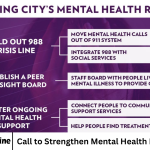Singapore has long been known for its strong healthcare system and focus on preventive medicine. However, with chronic illnesses such as diabetes, hypertension, and heart disease on the rise, the government is taking further steps to strengthen healthcare access, particularly in the northern parts of the country.
The northern region, which includes towns such as Woodlands, Yishun, and Sembawang, has seen a growing number of residents suffering from long-term health conditions. In response, the Ministry of Health (MOH) and local healthcare clusters have announced an expansion of health services to meet the needs of these communities.
This initiative is part of Singapore’s broader goal to make healthcare more accessible, community-focused, and preventive. By expanding facilities, improving chronic care management, and enhancing community programs, the government aims to reduce hospital admissions and improve overall well-being.
Rising Burden of Chronic Illness in Singapore
Singapore’s population is aging rapidly. As life expectancy increases, the number of people living with chronic diseases has also risen. Conditions such as diabetes, high blood pressure, high cholesterol, and obesity are now among the most common health issues affecting Singaporeans.
According to national health surveys, about one in three Singaporeans suffers from at least one chronic condition. Many of these cases require lifelong treatment, frequent monitoring, and lifestyle adjustments.
In northern Singapore, where the population includes many older residents and families with lower access to central facilities, the challenge is even greater. Hospitals like Khoo Teck Puat Hospital and community health centers have reported rising patient loads, especially for chronic disease management.
Government’s Vision for Better Health Access
The Singapore government’s long-term vision for healthcare focuses on moving beyond hospital-based care toward community-based and preventive healthcare models. This shift is essential for managing chronic diseases efficiently and reducing the strain on hospitals.
In line with this approach, MOH is investing in primary care networks, new medical facilities, and digital health systems in the northern region. The aim is to bring care closer to where people live, making it easier for residents to get early treatment and continuous monitoring.
The strategy also includes collaborations between public hospitals, polyclinics, general practitioners, and community health partners. Together, these organizations will form a coordinated care system focused on patient well-being.
Expansion of Polyclinics and Primary Care
A key part of the new initiative is the expansion of polyclinics and primary care centers. Several new polyclinics are planned for areas such as Yishun, Sembawang, and Woodlands to handle the growing number of chronic illness cases.
Polyclinics in Singapore serve as one-stop centers where patients can access a range of services, including medical consultations, laboratory testing, medication, and follow-up care. They play a crucial role in managing chronic diseases and preventing complications.
The expansion will allow more residents to receive timely care without having to travel long distances or wait for hospital appointments. It will also relieve pressure on existing facilities, ensuring that patients with serious conditions can be treated faster.
Community Health Programs and Preventive Measures
The new health services in northern Singapore are not just about building more clinics. A major focus will be on preventive health — helping people avoid or delay chronic illnesses through education, regular screenings, and healthy lifestyle support.
Community programs such as “Healthier SG” and “Screen for Life” will be strengthened in the region. Residents will be encouraged to register with family doctors for regular check-ups, health coaching, and customized care plans.
Local community centers, schools, and workplaces will also host health fairs, exercise classes, and nutrition workshops. These initiatives aim to build healthier habits early and reduce the long-term burden of disease.
Digital Health and Telemedicine Integration
Technology is playing a growing role in Singapore’s healthcare transformation. In the northern expansion, digital health services will help patients manage chronic illnesses more effectively from home.
Telemedicine platforms allow patients to consult doctors virtually, reducing the need for frequent clinic visits. Mobile health apps will help monitor vital signs such as blood pressure, glucose levels, and weight, enabling early detection of problems.
Hospitals and clinics will share electronic health records securely, allowing smoother coordination between healthcare providers. This ensures that patients receive continuous and consistent care, no matter where they are treated.
Focus on Elderly Care and Rehabilitation
The northern region of Singapore has a significant elderly population, many of whom suffer from chronic conditions that require long-term management. As part of the expansion, specialized programs will target senior citizens’ needs.
New eldercare centers and rehabilitation units are being developed to provide day care, physiotherapy, and occupational therapy. These facilities help seniors stay active, independent, and socially engaged while managing their health conditions.
Home care services will also be expanded, enabling healthcare professionals to visit patients who are unable to travel to clinics. This personalized care helps prevent hospital readmissions and improves quality of life for aging residents.
Training and Support for Healthcare Workers
Expanding health services requires a strong and well-trained workforce. The Ministry of Health, in collaboration with healthcare institutions, is increasing training opportunities for doctors, nurses, and allied health professionals.
These efforts include specialized courses on chronic disease management, geriatric care, and digital health technology. The goal is to equip healthcare professionals with the skills and knowledge needed to handle complex, long-term patient needs effectively.
In addition, new recruitment and retention programs are being introduced to ensure that the northern region has enough healthcare staff to serve its growing population.
Collaboration Between Public and Private Sectors
Public-private partnerships will play a crucial role in strengthening healthcare services in the north. Private clinics, hospitals, and insurance providers will work alongside public institutions to ensure residents have multiple care options.
For example, general practitioners in private clinics will be integrated into government programs like Healthier SG, allowing patients to access subsidized chronic care plans and regular screenings.
This collaboration ensures that healthcare remains affordable, accessible, and efficient, regardless of whether patients visit public or private providers.
Addressing Health Inequality and Accessibility
Another major goal of the initiative is to reduce health inequality across Singapore. While central and eastern regions have long enjoyed comprehensive medical facilities, northern residents have sometimes faced challenges in accessing specialized care.
By expanding services in the north, the government hopes to balance healthcare access across the island. Special attention will also be given to low-income families and vulnerable groups, ensuring they receive the necessary support through subsidies, outreach programs, and mobile clinics.
These measures aim to make healthcare equitable for all Singaporeans, regardless of where they live or their financial situation.
Improving Public Awareness and Education
Public awareness is essential for tackling chronic illness. Many Singaporeans still underestimate the risks of lifestyle diseases such as diabetes and hypertension. Education campaigns will therefore form a key part of the northern health expansion plan.
These campaigns will focus on early detection, diet management, regular exercise, and medication adherence. Community volunteers and health ambassadors will visit households to provide advice and encourage participation in health screenings.
Schools will also be involved in promoting healthy living among young people to build lifelong habits that prevent chronic disease later in life.
The Economic Impact of Health Expansion
Expanding healthcare services also brings economic benefits. By preventing diseases and improving early treatment, Singapore can reduce the overall cost of healthcare in the long run.
Healthier populations are more productive, miss fewer workdays, and contribute more to the economy. The expansion also creates new jobs in healthcare, technology, and community support services.
These combined effects help sustain Singapore’s reputation as one of the world’s leading healthcare and innovation hubs.
Challenges and Implementation Hurdles
While the expansion plan is ambitious, several challenges lie ahead. Recruiting enough skilled healthcare professionals, managing rising healthcare costs, and ensuring efficient coordination among various agencies will require careful planning.
Additionally, as more digital tools are introduced, ensuring data privacy and accessibility for older residents who may struggle with technology is essential.
The government will need to balance speed and quality, ensuring that new services meet the high standards Singaporeans expect from their healthcare system.
Public Response and Community Involvement
Public reaction to the expansion plans has been positive. Residents in the northern areas have welcomed the news, especially older citizens who will benefit from closer access to medical care.
Community organizations and local councils have expressed support, pledging to work with healthcare providers in promoting preventive programs.
Many residents also appreciate the emphasis on long-term health management rather than short-term treatment. This approach aligns with Singapore’s broader vision of building a healthier and more resilient society.
The Role of Preventive Healthcare in the Future
Preventive healthcare remains the cornerstone of Singapore’s health strategy. By helping people stay healthy and manage conditions early, the system can reduce future hospitalizations and improve overall life quality.
Programs encouraging healthier diets, regular exercise, smoking cessation, and mental wellness are already underway. The expansion in northern Singapore will strengthen these programs, ensuring that residents not only receive treatment but also guidance to maintain good health.
This forward-looking approach positions Singapore as a model for sustainable healthcare in an aging world.
Frequently Asked Questions
Why is Singapore expanding healthcare services in the north?
The expansion aims to address the growing number of chronic illnesses and provide easier access to medical care for residents in northern areas such as Yishun and Woodlands.
What kinds of chronic illnesses are most common in Singapore?
The most common chronic illnesses include diabetes, high blood pressure, high cholesterol, heart disease, and obesity.
How will the new health services help residents?
Residents will benefit from more clinics, better access to screenings, telemedicine options, community health programs, and preventive care initiatives.
Will the expansion include new hospitals?
While new hospitals may be considered in the long term, the current focus is on strengthening polyclinics, community care centers, and home-based health services.
How does technology fit into the expansion plan?
Digital health tools such as telemedicine, mobile apps, and electronic health records will help improve coordination, monitoring, and convenience for patients.
What role does preventive healthcare play in this plan?
Preventive healthcare is central to the plan, with programs focused on early detection, healthy living, and regular screenings to prevent chronic diseases from worsening.
When will these improvements take effect?
Some projects are already underway, while others will be completed gradually over the next few years as part of Singapore’s long-term healthcare strategy.
Conclusion
Singapore’s decision to expand health services in the north reflects its long-standing commitment to providing accessible and high-quality care for all citizens. With rising chronic illness rates, especially among the elderly, these improvements come at a critical time.
By investing in primary care, preventive programs, digital health, and community partnerships, the government aims to create a healthcare system that focuses on wellness rather than sickness. The initiative will bring care closer to home, empower residents to take charge of their health, and ensure no one is left behind.
















